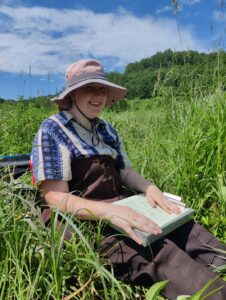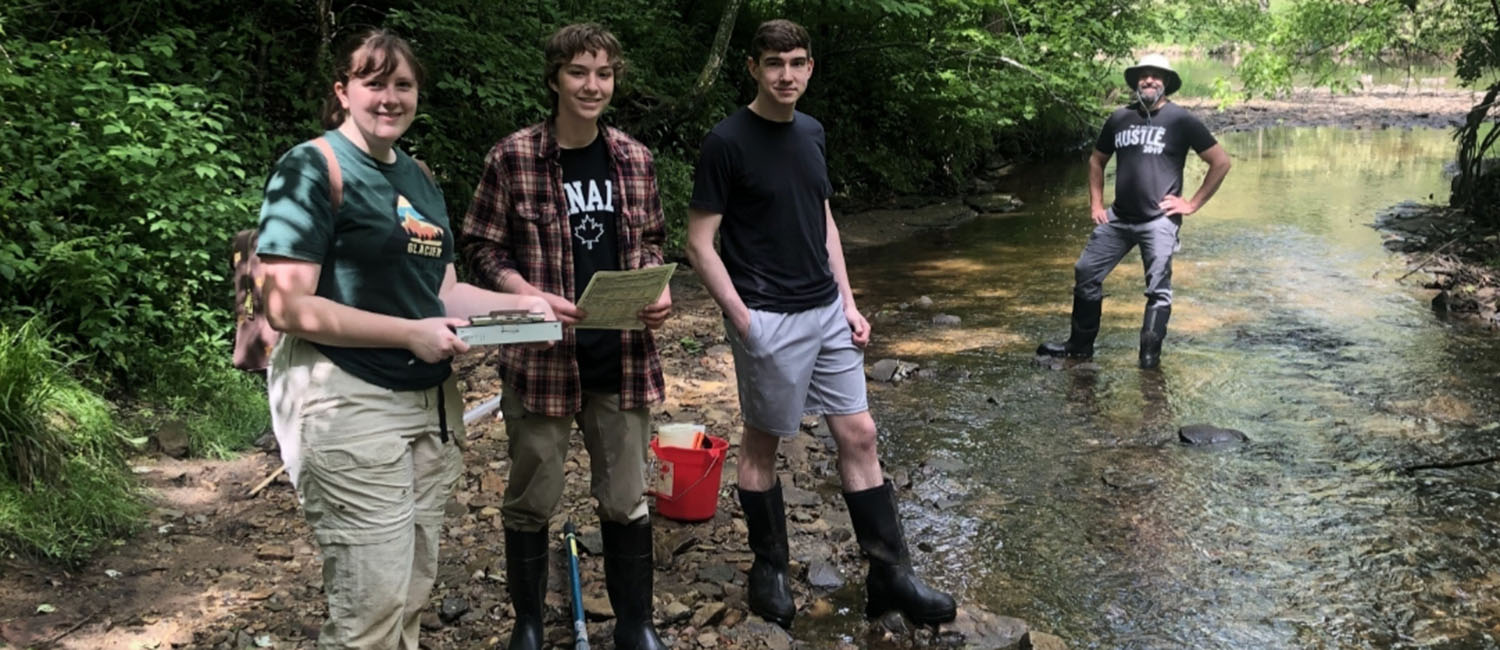The Red Cedar Watershed in west-central Wisconsin is one of the most highly impacted watersheds in Wisconsin. The Red Cedar River was listed as an EPA impaired water in 1998, and Tainter Lake and Lake Menomin have been listed as highly impaired since 1972 due to high levels of phosphorus pollution, which depresses local property values and the tourism industry.
Keith Gilland, an assistant professor at UW-Stout, lives in Menomonie and says Lake Menomin could be an asset, but most of his neighbors go further north during the summer where the lakes aren’t teeming with blue-green algae. This kind of pollution is common in highly agricultural areas like the Red Cedar Watershed, which encompasses more than 3,000 farms. Agricultural water management is one of Wisconsin’s 10 Grand Water Challenges and a top priority for the Freshwater Collaborative of Wisconsin, which provided funding for the “Establishment and Support of the Red Cedar Basin Monitoring Group.”
“The Red Cedar Basin is a good representation of a lot of watersheds in the entire upper Midwest Great Lakes region,” he says. “Lake Menomin has problems, and fixing it would benefit the City of Menomonie, Dunn County, and the lake, and it could be a good representation and model for other understudied lake systems.”
Lake Menomin interests him as a citizen and an ecologist. He notes that the assumption is if farmers adopt certain land management practices, the lakes will fix themselves. Yet that might not be entirely true given the lakes’ history, changes in land use, and the changing climate which has impacted precipitation patterns and runoff events in the watershed.
“We know the lake is green, but I don’t know that we should assume we entirely know why,” he says. “A large part of the problem could indeed be the particle-bound phosphorus coming from farm fields, but it also could be far more complicated than that, and we really need to study the lake and the entire watershed to understand it and refine our solutions.”
Concerted pollution remediation strategies began in 2013 followed by establishment of a volunteer-led Red Cedar Basin Monitoring Group to evaluate the effectiveness of these strategies. Unfortunately, the group languished after its leader retired in 2015, and valuable long-term data is missing.
“A lot of work has gone into fixing water-quality issues at the watershed scale, but there hasn’t been a concerted effort to monitor whether it’s been effective,” Gilland says.
That’s where he and a team of student researchers and faculty collaborators come in.
With support from the Freshwater Collaborative in 2022, Gilland established an ongoing monitoring program within UW-Stout — not only helping to fill the monitoring gap, but also preparing students for the workforce.
The project brings together UW-Stout faculty from biology and applied social science as well as external partners like the city of Menomonie, Dunn County Land and Water Conservation, and the Red Cedar River Watershed Division of UW-Extension.
Local high school and middle school students are involved in the sampling program. Last summer three undergraduates from UW-Stout collected and analyzed samples from surface waters of the Red Cedar Watershed. All three presented their findings at Research in the Rotunda in Madison and the 2023 National Conference on Undergraduate Research hosted by UW-Claire. This summer the monitoring group includes students from UW-Eau Claire, UW-River Falls and UW Oshkosh.
“My favorite part of this research has been traveling to different sites to collect data and working with my colleagues and professors. It was interesting to see firsthand how the algal blooms developed over the course of the summer,” says Dylan Kostuch, who graduated in May.
Having never worked on a research project, sophomore Kal Breeden was happy to get hands-on fieldwork experience early in his college career.

“This experience has given me many valuable skills that will help me to reach my goals,” he says. “I feel very confident with the amount of work experience that I’ve gained through this project, particularly from conducting both fieldwork and lab work, and am excited to enter the workforce and continue working on meaningful research projects like this one.”
Britney Serafina graduated in May with a job lined up as a land resource technician for Chippewa County. Learning how to use tools and equipment and improving her GIS skills played a role.
“This experience has already helped me attain my career goals by giving me the confidence and experience for finding new job opportunities,” she says.
The hands-on training for students combined with the ability to provide consistent watershed monitoring is a win for Wisconsin — and could lead to more collaborations and training.
“Surface water monitoring within the Red Cedar Watershed is critical to the assessment of our water resources and in determining the locations of land management, conservation and restoration practices,” says Chase Cummings, a county conservationist with the Dunn County Land and Water Conservation Division. “Local municipal resources can be limited in areas of resource monitoring and the implementation of best management practices. We are committed to the role that we can play in advancing these efforts and look forward to our continued partnership with UW-Stout, as well as future partnerships, contributions and opportunities this program can provide.”

